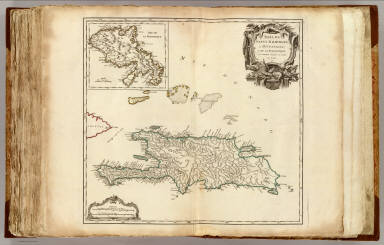One of the biggest pleasures of historic research is the discovery of some fascinating figures of the past. One of these is surely the French missionary Jean Baptiste Du Tertre, or Dutertre. Du Tertre was born in Calais, France, in 1610 and in his youth he served in the Dutch army and in the Dutch navy, before hearing the call of the faith and entering the Dominican order in 1635.
According to Doris Garraway in “The Libertine Colony” (2005) “That same year, four Dominican missionaries, including Raymond Breton, departed for Guadeloupe at the request of Richelieu and members of the new Company of the Islands of America. Due to the ill preparedness of the expedition, disease, and famine, only Father Breton remained after five years. To relieve him, Du Tertre traveled to Guadeloupe in 1640 with two other missionaries during that island’s grueling war with the Indians. Returning briefly to France in 1642 to request aid for the mission, Du Tertre remained in Guadeloupe until political differences with the governor forced him to leave in 1647.”
So Du Tertre visited the French Caribbean settlement from 1640 to 1647. He is relatively well known among rum history’s enthusiasts, because it is commonly believed that we owe him the first clear and exhaustive description of rum production in the French Caribbean, contained in his much quoted “Histoire générale des Antilles habitées par les Francois …” published in 1667. Here it is:
“Neither the crushed cane nor the scum that is removed from the second and third sugar boiling cauldrons is useless. The scum is reserved in a trough where it is kept to make eau-de-vie, or brandy. The slaves prepare an intoxicating drink from it, and it sells quite well on the islands; sugar syrups also sells quite well because it is used in making spice bread in Europe. I have also seen it boiled together with ouicou which renders a drink even stronger than the best Flemish beer. As for the crushed cane, it is fed to the pigs which fattens them and gives the meat and lard an excellent flavor. The juice from crushed sugar cane which isn’t tipped quickly enough into the boiling cauldrons, goes sour immediately, and when this is mixed with water the preparation is called vesou, which also sells well on the islands. All these little tricks contribute significantly to a well-run sugar plantation.” (translated by Bernie Mandelblatt in her seminal essay “Atlantic consumption of French Rum and Brandy and the economic growth in the Seventeenth- and Eighteenth- Century Caribbean” 2011)
Further on in the book, Du Tertre writes that the French settlers living in the islands are very hospitable and offer visitors “vin et eau de vie”, “wine and water of life”. Then, speaking about the slaves, he writes:
“L’on ne leur donne à boire de l’eau de vie, que lors qu’on les oblige à qualque travail rude, ou quand ils replantent le Tabac au fort de la pluie. L’Eau de vie estant un peu plus commune dans les Isles, depuis que l’on y fait du sucre, par le secret qu’on a trouvé d’en faire avec l’escume qu’on tire des chauderies ….” That means, more or less,
“They are not given water of life to drink, except when they are obliged to do very hard work, or when they are planting tobacco under pouring rain. Water of life has been a bit more common on the islands since sugar started to be produced there, thanks to the secret which has been discovered of making it from the skimming taken from the cauldrons …”
Let’s pay attention to the timing. Du Tertre travelled to the French Caribbean from 1640 to 1647 and he described sugar cane cultivation, sugar production and rum production as an ordinary part of the life and work of the French settlers. But he got back to the Caribbean again in 1656/57 and published this book only in 1667, ten years after his last voyage. Therefore, sadly, it can’t be used as a sure, reliable, historic source proving without doubts the existence of rum production in the French Caribbean in the 1640s. That is what we are trying to demonstrate with this series of articles.
And yet …
Proceeding with my research into the early French colonization of the Caribbean, I discovered that Jean Baptiste Du Tertre had previously written a first, shorter, relation of his voyages immediately after his return to France in 1647. This first book circulated in manuscript form for some years among his circles of relations. In 1654 he decided to publish the book. The reason for this early publication is very interesting; actually, we found ourselves in the middle of a real XVII century’s literary intrigue. Let’s read again Doris Garraway’s book, “Back in France, he [Du Tertre] circulated his historical manuscript among friends and supporters such as the illustrious Achilles de Harlay, chief financial administrator of the company and longtime counselor to the king. According to his preface of 1654, Du Tertre resolved to publish the work following the mysterious disappearance of one early draft. His Histoire générale des isles de Christophe, de la Guadeloupe, et le Martinique et autres appeared in 1654. Four years later César de Rochefort’s Histoire naturelle et morale des iles Antilles de l’Amérique was published anonymously in Rotterdam and thereafter carried the stigma of plagiarism from Du Tertre’s lost copy. Accusing Rochefort of inauthenticity and misrepresentation, Du Tertre produced an expanded second edition of his work based on research carried out during his final visit to the colonies in 1656-57. Published from 1667 to 1671, the Histoire générale des Antilles habitées par los Francois became a reference for all subsequent historians of the French Caribbean.”
In this first book, as I have said written after his return in 1647 and published in 1654, we find a large and detailed description of the technicalities of sugarcane cultivation and of sugar production. A complex, difficult, little known skill, Du Tertre writes, a veritable industrial secret which the French settlers at the beginning found it hard to master. But sometimes good fortune lends a hand:
“Monsier de Poincy l’à eu par hazard; car un sucrier Portugais homme fort expert qui le servait, ayant commis quelque crime pour lequel il devoit estre pendu; Monsieur de Poincy lui donna fay grace, à condition qu’il enseigneroit son secret à un de ses domestiques; ce qu’il fit, & depuis on fait quantité de tres-beau & tres-fin sucre à saint Christophe.” That means, as usual more or less,
“Monsier de Poincy got it by chance; because a highly skilled Portuguese sugar producer who served him had committed a crime for which he was sentenced to hang; Monsieur de Poincy granted him a reprieve on condition that he taught his secret to one of his servants. He did, and since then a great quantity of very nice, very fine sugar has been produced on Saint Christophe.”
Monsier de Poincy was Phillippe de Longvilliers de Poincy (1584–1660) a nobleman and a member of the Order of the Knights of Malta. He governed the island of Saint Christopher from 1639 to his death in 1660.
And here we find, at last, what we have been looking for:
“On tire encore une autre tres-grande utilité du sucre de ces Cannes; car on en fait des eaux de vie tres-excellents, lesquelles se vendent fort cher dans le pays.”
“Another great bounty is obtained from this sugarcane; because from it excellent water of life is produced, which is sold at a high price in the country.”
A brief description of the fermentation and distillation process follows. Therefore, according to Du Tertre, in the 1640s at the latest, French colonists grew sugarcane on a regular basis and produced sugar. Besides, with the by-products of sugar production they produced a fermented beverage that called vin de canne (cane wine) and also a strong distilled beverage that they called eau de vie de canne (cane water of life), our Rum.
Finally, we know that nothing of sugarcane is thrown away, but here is an example of usage which would never have occurred to me:
“Au reste, c’’est la meilleure commodité du monde, que ces Cannes de sucre pour les passans; car on en prend tousiours deux ou trois, qui vous servent de b°ton par le chemin, & lors que vous estes fatigué du voyage, & alteré par les chaleurs, en vous reposant vous mangez une partie de vôtre bàton, qui vous rafraischit d’une eau de sucre fort agreable.”
“Besides, these sugarcanes are very handy to wayfarers, because you can take two or three and use them as a walking stick, and when you are weary of walking, and thirsty because of the heat, while you rest you can eat part of your walking stick, which will refresh you very agreeable sugary water.”
Marco Pierini
PS: As I have already written, unfortunately I have never studied French and I don’t speak it. Moreover, these texts are written in XVII century’s French, which is different from contemporary French. However, it is a neo-Latin language so, with the help of some dictionaries and great effort I can read it and, hopefully, grasp the essential meaning. If any readers should find errors or inaccuracies, please let me know and I will be happy to make corrections.
PPS: I published this article on March 2019 in the “Got Rum?” magazine. If you want to read my articles and to be constantly updated about the rum world, visit www.gotrum.com


